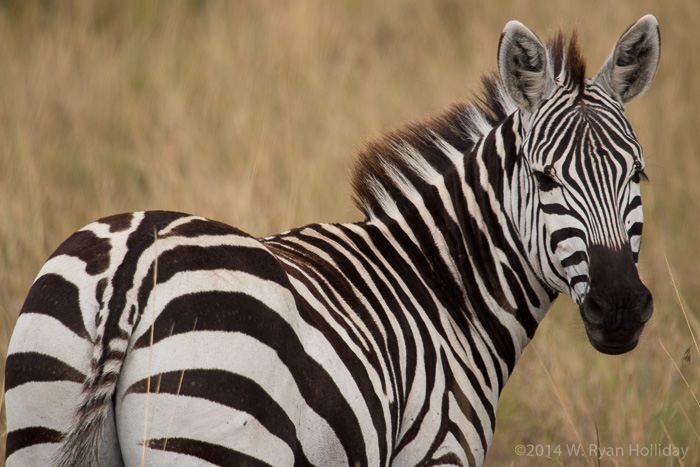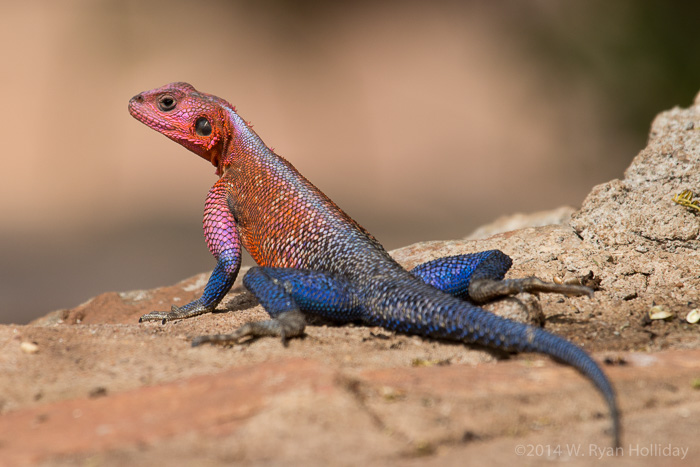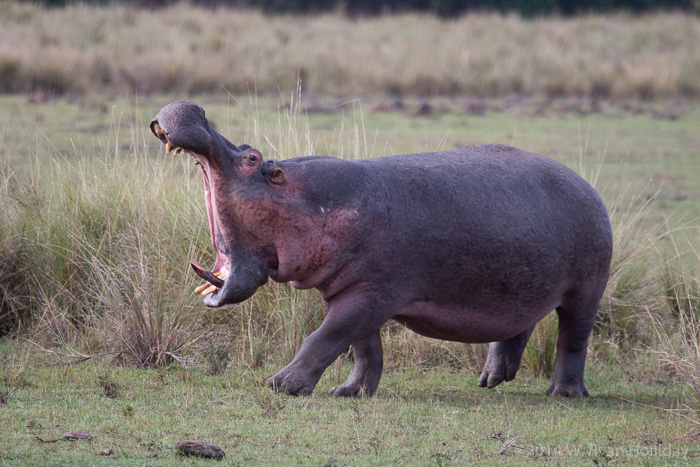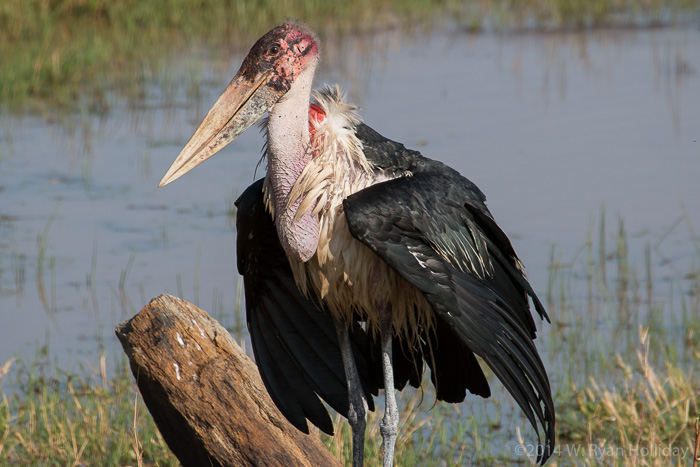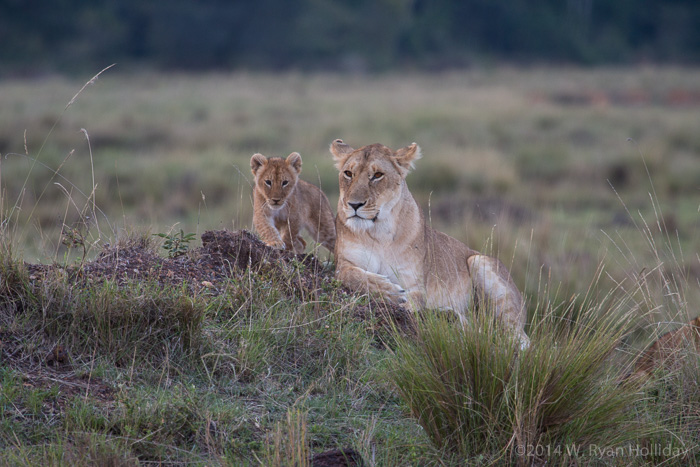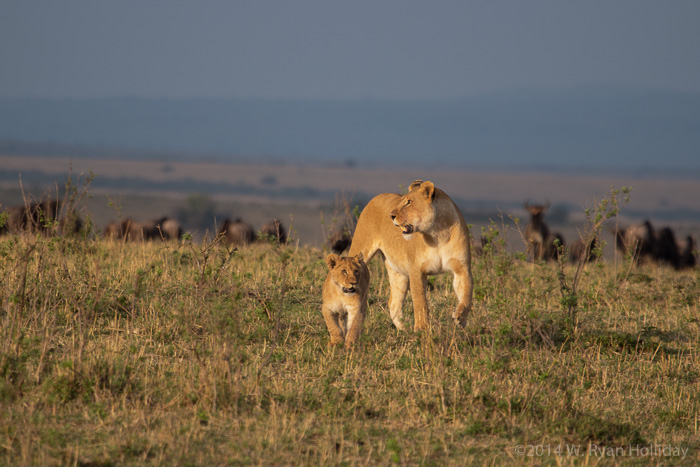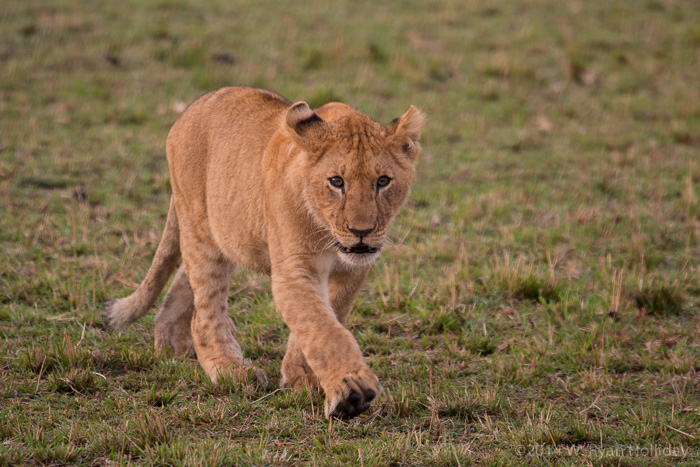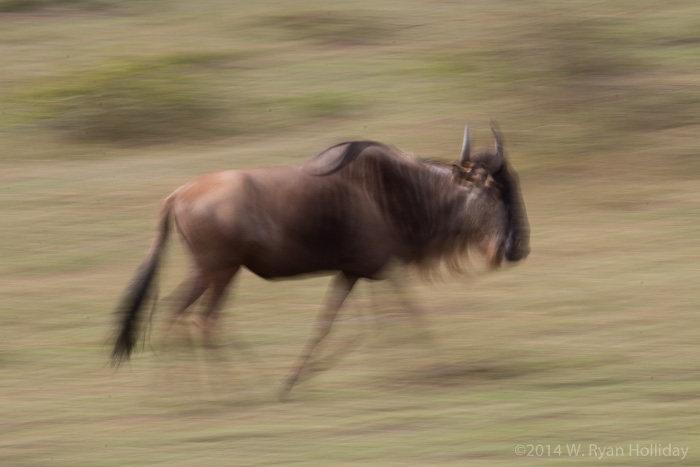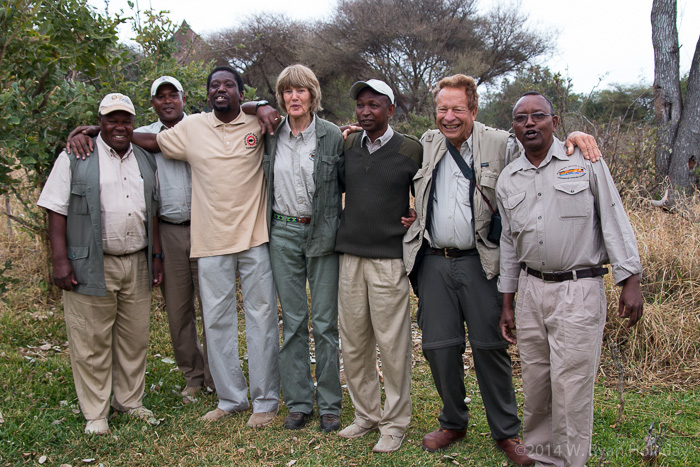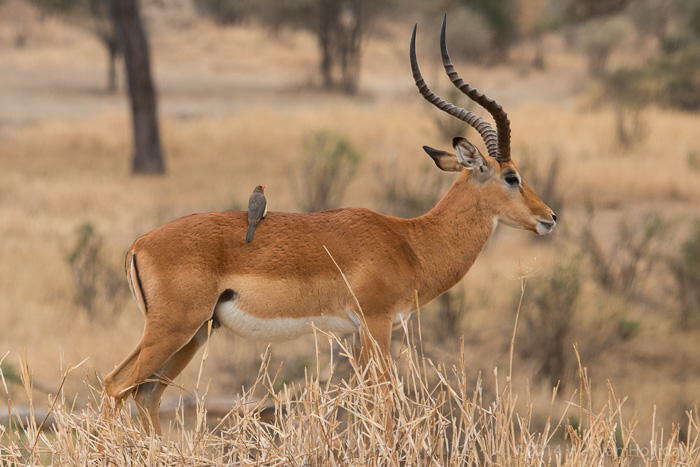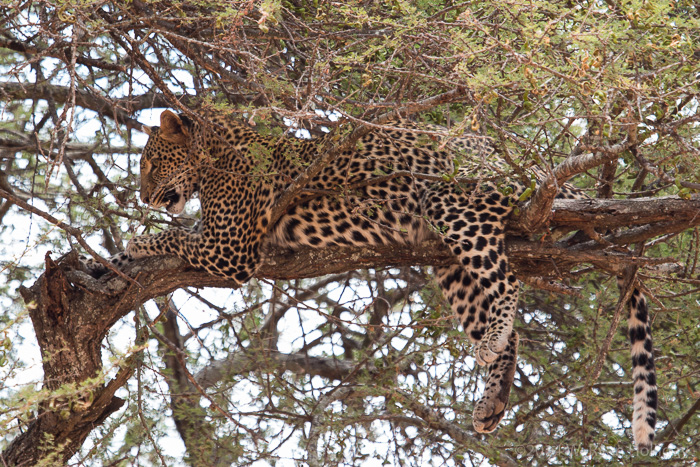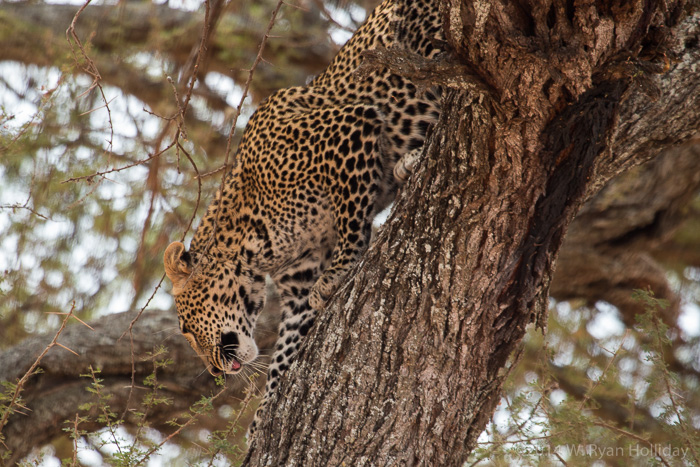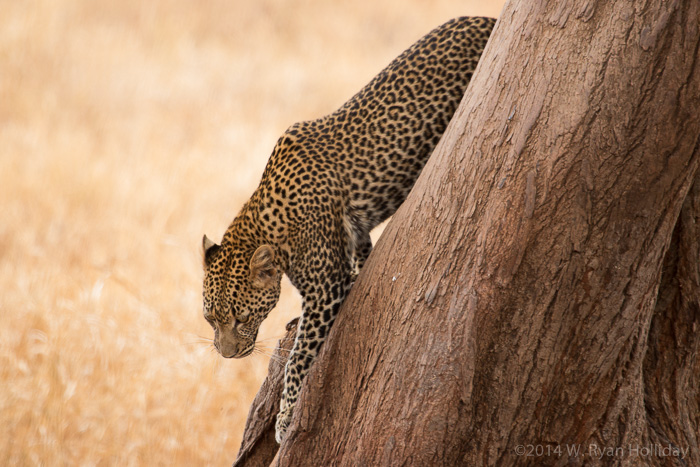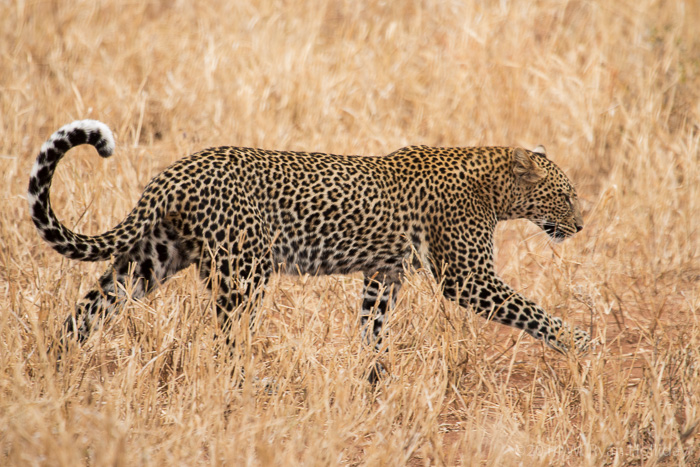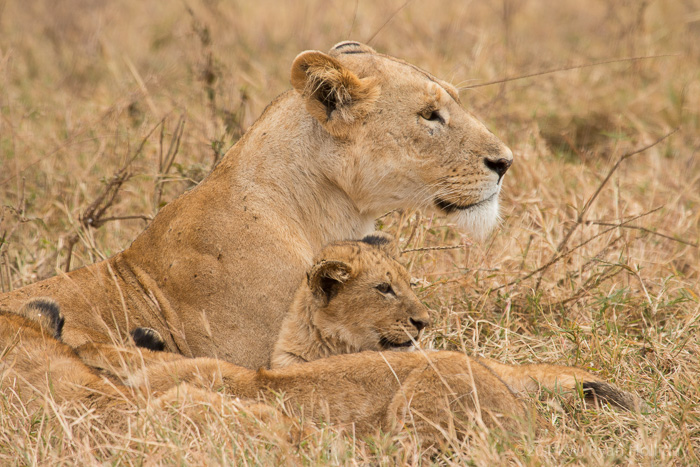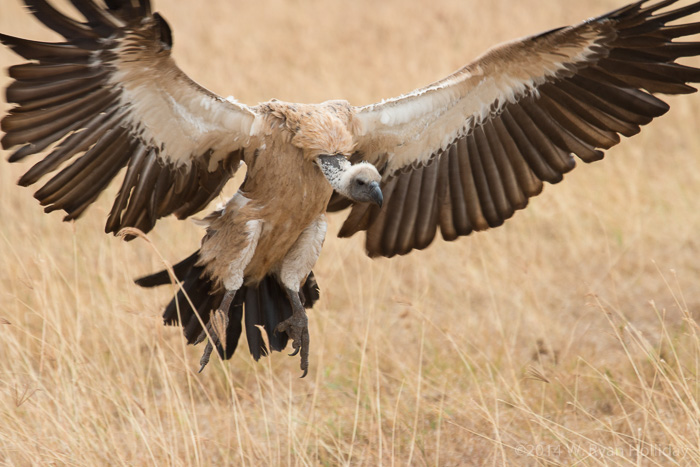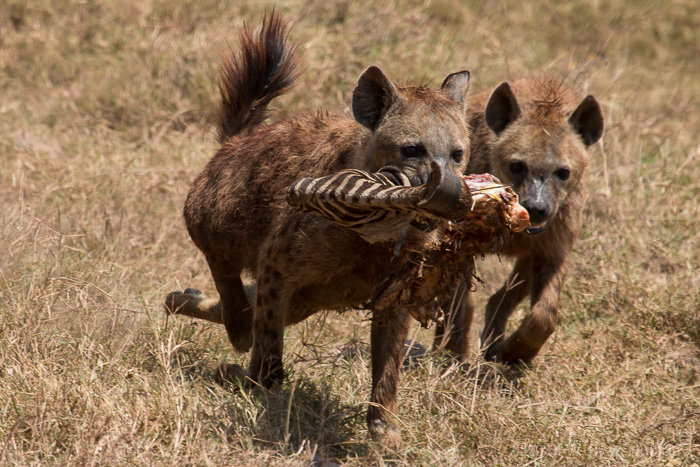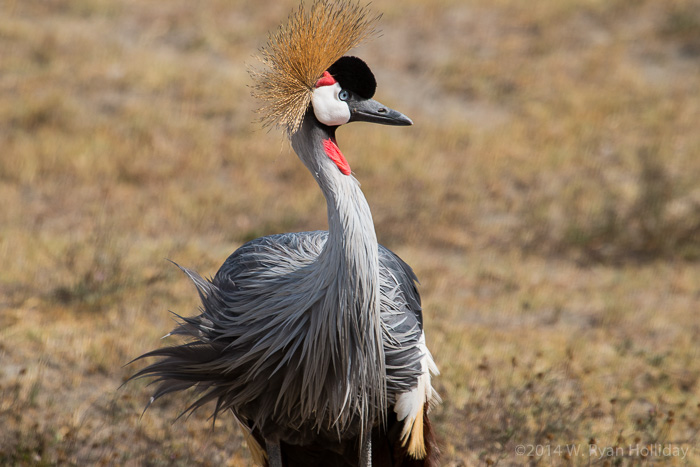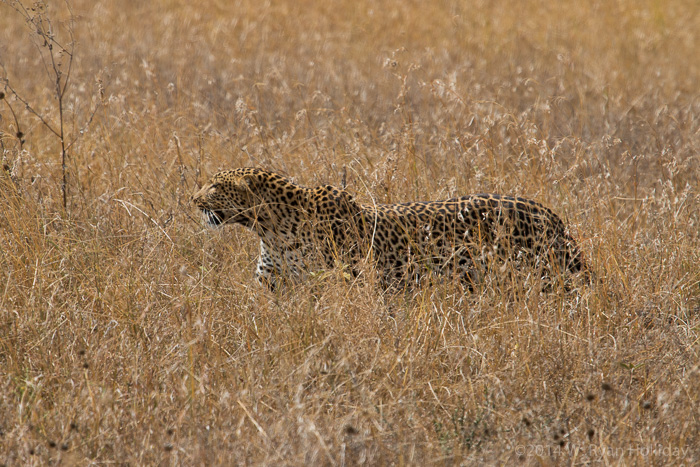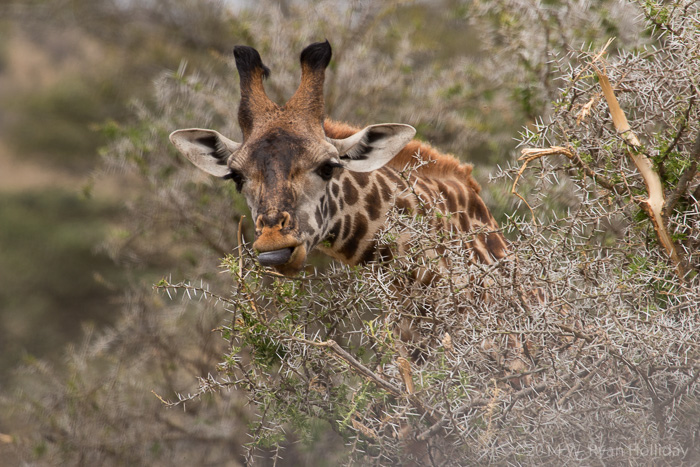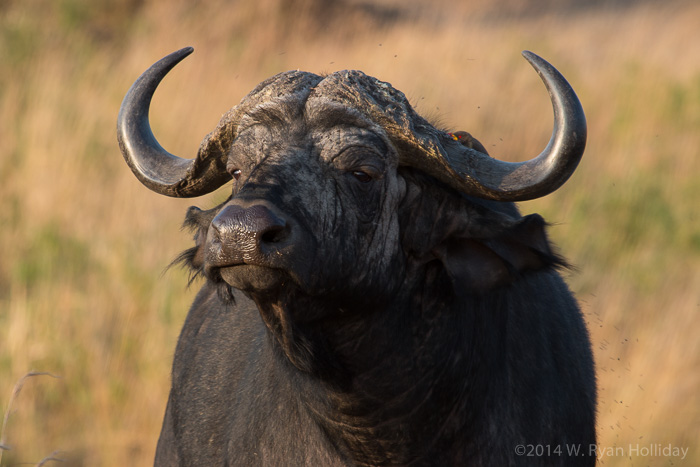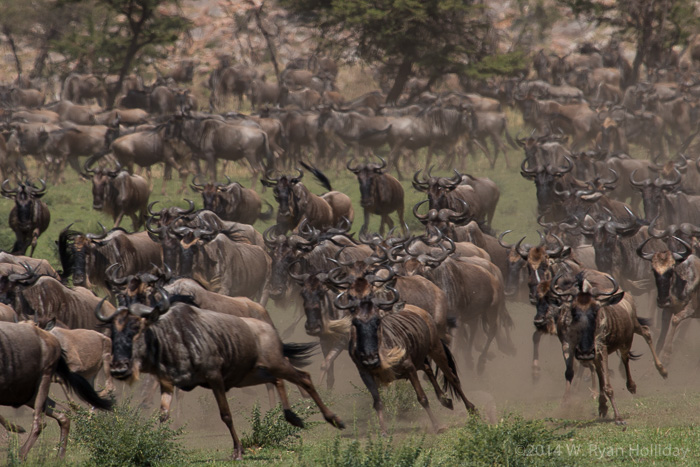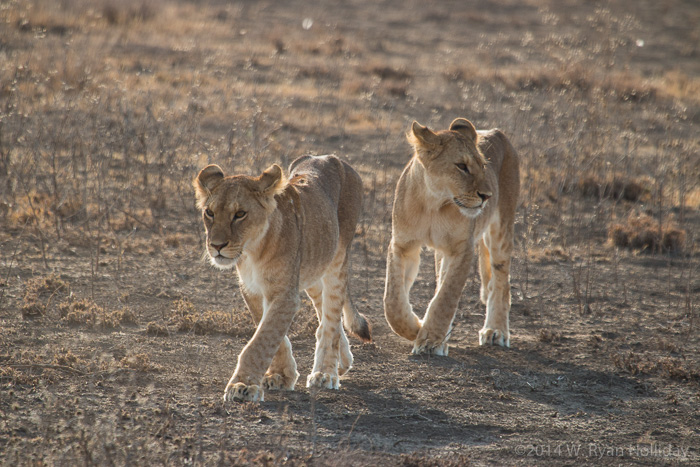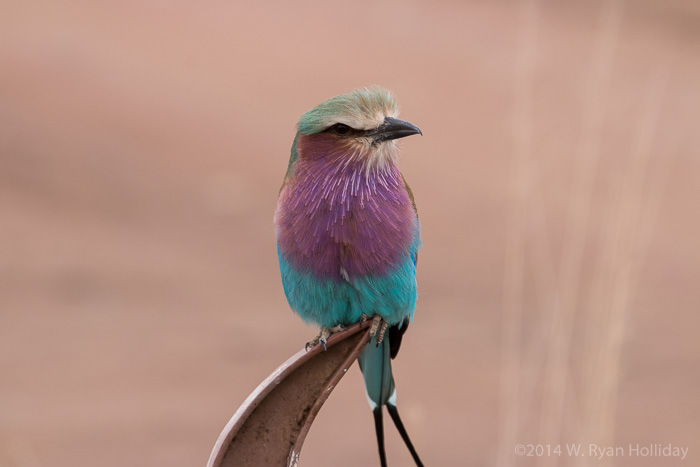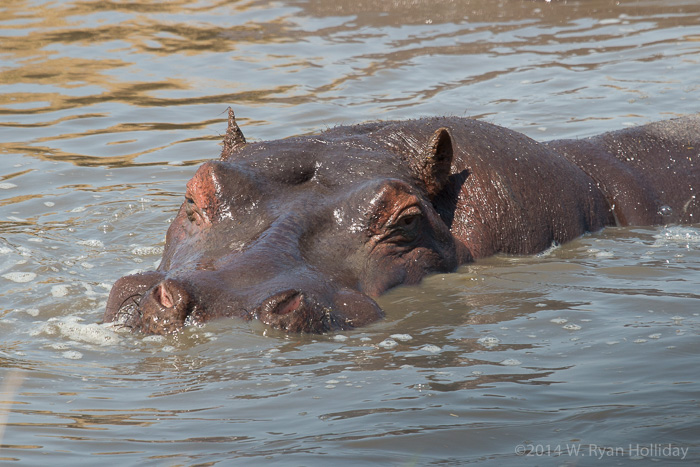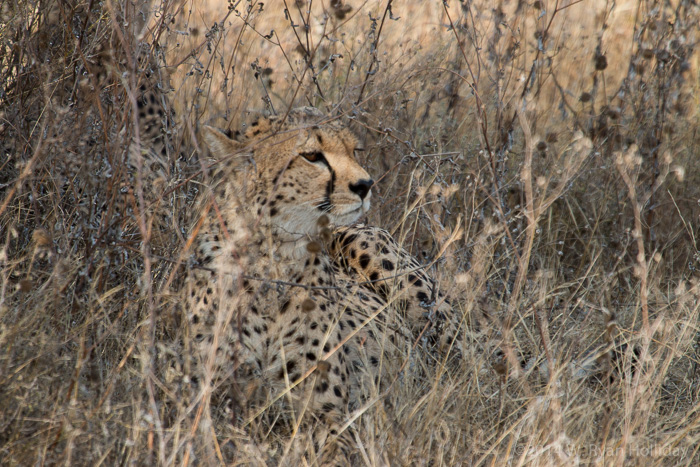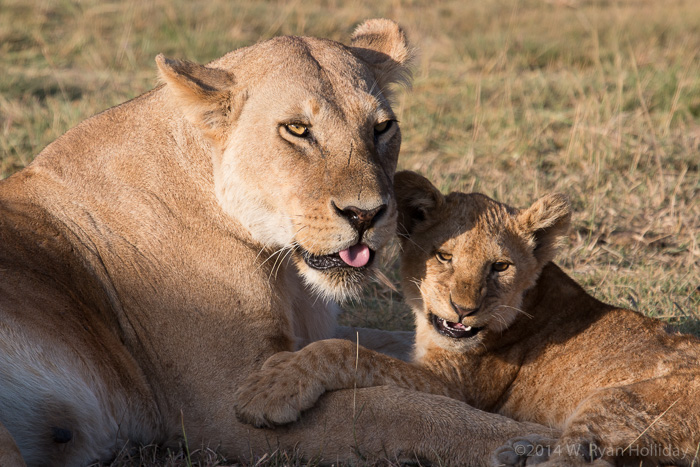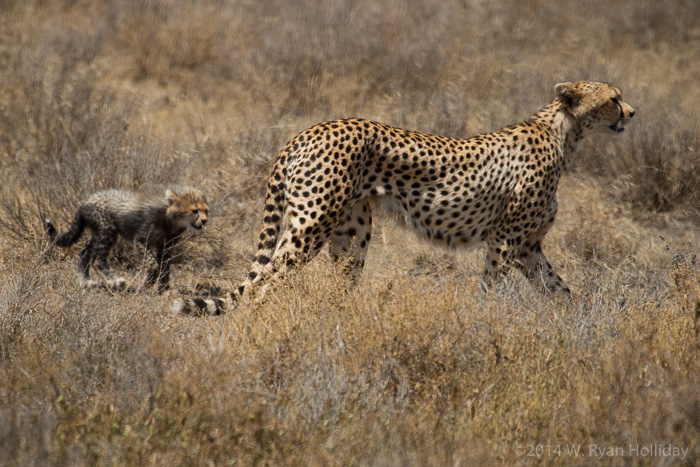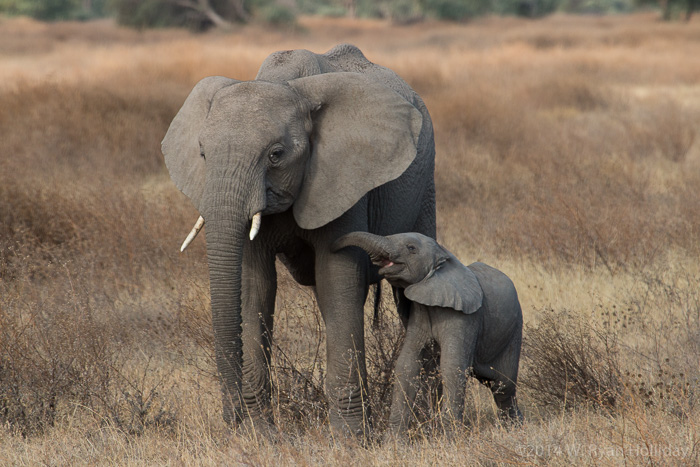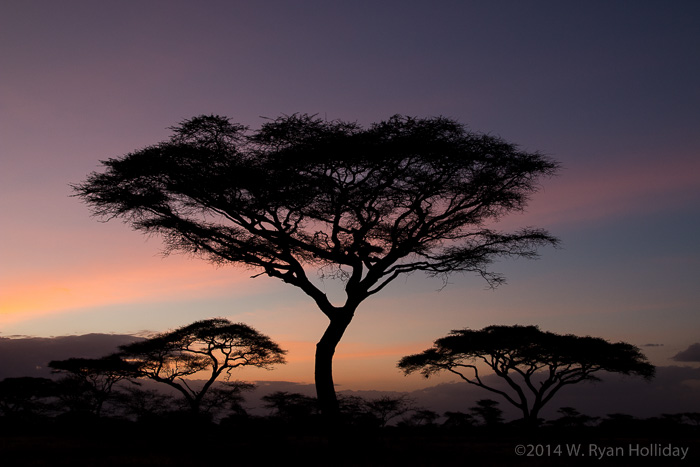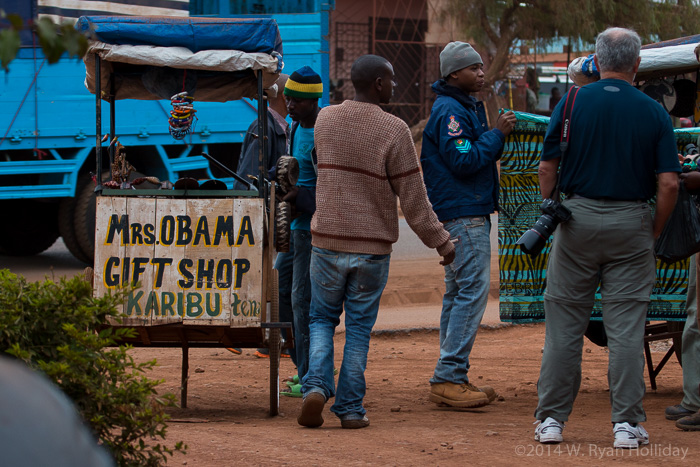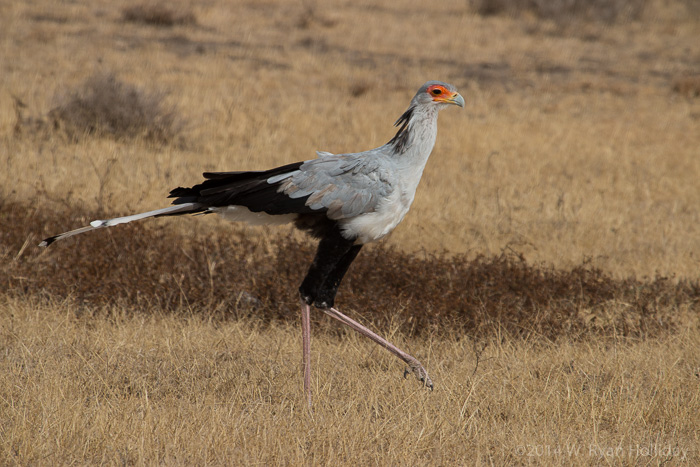I’m pretty sure I could go on safari every day for the rest of my life and be very, very happy, provided there was some time for naps on occasion. Getting up before sunrise and standing in the back of an open-top vehicle in the fresh air while driving around beautiful places and looking at amazing numbers of incredible animals is a wonderful way to experience life, even if it is only for a few weeks.
Today was more of the same, although we finally got a good look at a black rhino, which is an animal that may sadly disappear from the wild due to poaching – if you ever see a shop selling medicines made from endangered species, please call the cops and get them shut down, because it’s far too amazing seeing the animals in a functional ecosystem to even tacitly support their destruction (and I’m descending the soapbox… now). We also went chasing up and down the Mara River trying to catch wildebeest crossing, but they outwitted us and we finished the day having seen only dry beasties. For my part I’m just as happy sitting in the midst of the massive herds and don’t really feel the need to see them go swimming, but it’s supposed to be an impressive sight, so I have no complaints about spending some time trying to catch them eluding crocodiles.
The day ended with another night drive, and this one was also great – we saw a lioness stalking zebra, an assortment of mongoose, hyena, and others, and also a serval, which is like an African bobcat. The wildebeest eyes reflected in the searchlight continues to astound me – it really does look like a synchronized parade of thousands of fireflies – and I’ve got one more night drive tomorrow, so we’ll see what else pops out in the African dark.
